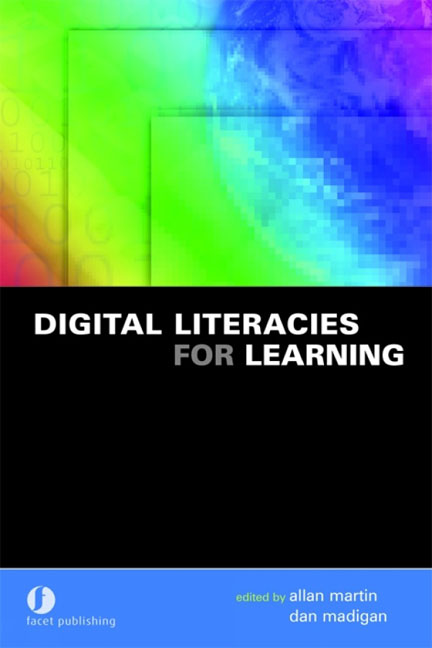Book contents
- Frontmatter
- Contents
- Dedication
- The contributors
- Foreword
- Preface
- Part I Literacies in the digital age
- Part II Enabling and supporting digital literacies
- 12 Supporting and enabling digital literacy in a global environment: preview of Part 2
- 13 A ‘dense symphony of the nation’: Cymru Ar-Lein and e-citizens and e-communities in Wales
- 14 The impact of information competencies on socio-economic development in Southern Hemisphere economies
- 15 Supporting students in e-learning
- 16 The information commons: a student-centred environment for IT and information literacy development
- 17 Socio-cultural approaches to literacy and subject knowledge development in learning management systems
- 18 Approaches to enabling digital literacies: successes and failures
- 19 Professional development and graduate students: approaches to technical and information competence
- 20 Windward in an asynchronous world: the Antiguan initiative, unanticipated pleasure of the distance learning revolution
- 21 A tale of two courses
- Index
18 - Approaches to enabling digital literacies: successes and failures
from Part II - Enabling and supporting digital literacies
Published online by Cambridge University Press: 08 June 2018
- Frontmatter
- Contents
- Dedication
- The contributors
- Foreword
- Preface
- Part I Literacies in the digital age
- Part II Enabling and supporting digital literacies
- 12 Supporting and enabling digital literacy in a global environment: preview of Part 2
- 13 A ‘dense symphony of the nation’: Cymru Ar-Lein and e-citizens and e-communities in Wales
- 14 The impact of information competencies on socio-economic development in Southern Hemisphere economies
- 15 Supporting students in e-learning
- 16 The information commons: a student-centred environment for IT and information literacy development
- 17 Socio-cultural approaches to literacy and subject knowledge development in learning management systems
- 18 Approaches to enabling digital literacies: successes and failures
- 19 Professional development and graduate students: approaches to technical and information competence
- 20 Windward in an asynchronous world: the Antiguan initiative, unanticipated pleasure of the distance learning revolution
- 21 A tale of two courses
- Index
Summary
Abstract
This chapter outlines a range of approaches that have been adopted in various universities in order to address the issue of achieving acceptable levels of information and communications technology (ICT) literacy among the staff and student body. Some of these have been successful, while others have failed. In each case an effort is made to identify the reasons for success or failure, including local factors; it then seeks to draw out general principles evidenced by these cases, which should lead to improved success in future.
Introduction
Information and communications technology (ICT) literacy is now universally considered an essential skill needed by university staff to undertake their research and teaching, and by students to undertake their studies. Graduates in almost all walks of life are expected to possess ICT skills, in varying depth. Many different approaches have been adopted by universities to improving the levels of ICT literacy among their staff and students. Some have been more successful than others but, since ICT literacy is rarely an end in itself, it is hard to assess the degree of ‘success’ or ‘failure’ of any particular approach. Much depends on the prevailing culture of the institution, what current levels of literacy exist, and what goals one has. What does seem clear is that the establishment of clear, achievable goals and an institutional commitment are vital, along with an understanding that ‘ICT literacy’ is not something that can be achieved once and for all, since the desired level of literacy is a moving target, which will continue to move (perhaps even accelerate) indefinitely (Winship, 2001; CEPIS, 2005). The following variety of approaches is presented to illustrate these claims, and to offer ideas that may be more or less appropriate in different cultural and technical environments.
Free and rich repertoire of classroom-based courses
Some universities have taken the approach of providing free-of-charge a wide range of (ever-changing) face-to-face courses. They are usually open to all staff (academic and general) as well as to postgraduate students and sometimes undergraduates. These courses are typically organized and managed by a small full-time staff contingent, supplemented by contributions made by technical specialists for more esoteric courses. The courses aim to cover a full spectrum of ICT skills, being constantly upgraded as technology and demand vary.
- Type
- Chapter
- Information
- Digital Literacies for Learning , pp. 196 - 205Publisher: FacetPrint publication year: 2006



